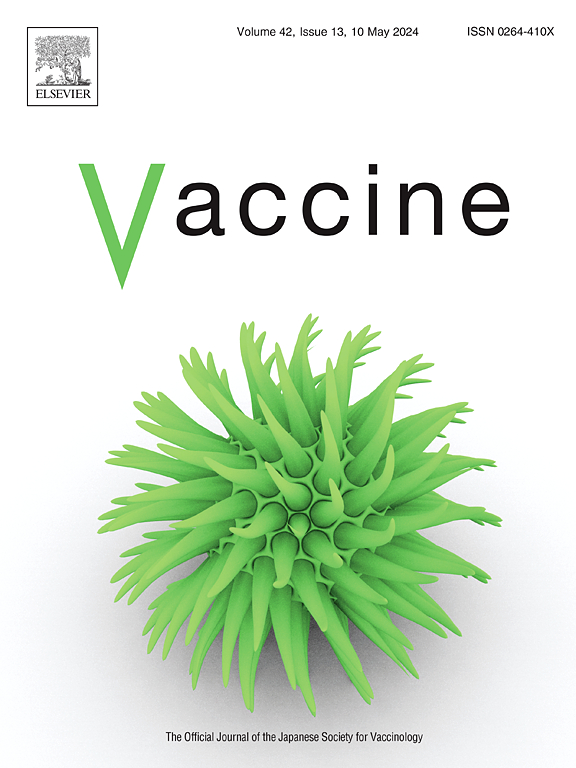Cost-effectiveness of different HPV vaccination strategies for cervical cancer prevention in South Africa
IF 4.5
3区 医学
Q2 IMMUNOLOGY
引用次数: 0
Abstract
Background
Most cervical cancers can be prevented by population-wide vaccination of pre-adolescent girls with highly efficacious HPV vaccines. In South Africa, first-dose coverage of bivalent HPV vaccination among girls aged 10 is ∼80 %. We investigated the additional impact and cost-effectiveness of different bivalent and nonavalent vaccination strategies among the general population and women with HIV (WHIV).
Methods
We used an individual-based, population-level model for HPV and HIV transmission in South Africa to estimate the epidemiological impact of HPV vaccination. The costs of interventions in the cervical cancer care cascade are estimated in 2024 USD based on resource use and prices obtained from research studies. To estimate cost-effectiveness of different bivalent strategies, we calculated the median cost per disability adjusted life-year averted (DALY) between 2024 and 2120 and compared it to an opportunity cost (OC) threshold of USD 3015. We calculated a threshold price at which nonavalent vaccination will be cost-effective in South Africa.
Results
Current interventions are projected to reduce age-standardised cervical cancer incidence from 54 to 12 per 100,000 women by 2120. Increasing girl-only bivalent coverage to 90 % would prevent an additional 5 % of cases and be cost-saving. Gender-neutral vaccination at 80 % coverage would yield similar impact, with a USD/DALY averted of USD 2782 compared to girls-only vaccination. Vaccinating WHIV up to age 45 could prevent 10 % of cervical cancer cases in this group and remains cost-effective. The nonavalent vaccine would be cost-effective if priced below USD 40 per dose.
Conclusion
Enhanced HPV vaccination strategies—including higher coverage, gender-neutral programs, and targeted vaccination of WHIV—are cost-effective in South Africa. However, no vaccination strategy alone will reach elimination, which will require integrated approaches combining vaccination with cervical cancer screening and treatment.
南非预防宫颈癌的不同HPV疫苗接种策略的成本效益
背景:大多数宫颈癌可以通过对青春期前女孩进行高效HPV疫苗接种来预防。在南非,10岁女孩中二价HPV疫苗的首次接种覆盖率约为80%。我们调查了不同的二价和非价疫苗接种策略对普通人群和感染艾滋病毒(WHIV)的妇女的额外影响和成本效益。方法:我们在南非使用基于个体的人群水平HPV和HIV传播模型来估计HPV疫苗接种的流行病学影响。根据从研究中获得的资源使用和价格,宫颈癌护理级联干预措施的成本以2024美元为单位进行估计。为了估计不同二价策略的成本效益,我们计算了2024年至2120年间每个残疾调整生命年(DALY)的中位数成本,并将其与3015美元的机会成本(OC)阈值进行了比较。我们计算了南非非价疫苗接种具有成本效益的阈值价格。结果预计到2012年,目前的干预措施将使年龄标准化宫颈癌发病率从每10万名妇女54例降至12例。将仅限女孩的二价覆盖率提高到90%,将额外预防5%的病例,并节省费用。覆盖率达到80%的性别中立疫苗接种将产生类似的影响,与仅限女孩接种疫苗相比,可避免2782美元/DALY。在45岁以前接种艾滋病毒疫苗可以预防这一群体中10%的宫颈癌病例,并且仍然具有成本效益。如果价格低于每剂40美元,这种无价疫苗将具有成本效益。结论加强HPV疫苗接种策略——包括更高的覆盖率、性别中立的规划和有针对性的whiv疫苗接种——在南非具有成本效益。然而,单靠疫苗接种策略无法消除宫颈癌,这需要将疫苗接种与宫颈癌筛查和治疗相结合的综合方法。
本文章由计算机程序翻译,如有差异,请以英文原文为准。
求助全文
约1分钟内获得全文
求助全文
来源期刊

Vaccine
医学-免疫学
CiteScore
8.70
自引率
5.50%
发文量
992
审稿时长
131 days
期刊介绍:
Vaccine is unique in publishing the highest quality science across all disciplines relevant to the field of vaccinology - all original article submissions across basic and clinical research, vaccine manufacturing, history, public policy, behavioral science and ethics, social sciences, safety, and many other related areas are welcomed. The submission categories as given in the Guide for Authors indicate where we receive the most papers. Papers outside these major areas are also welcome and authors are encouraged to contact us with specific questions.
 求助内容:
求助内容: 应助结果提醒方式:
应助结果提醒方式:


